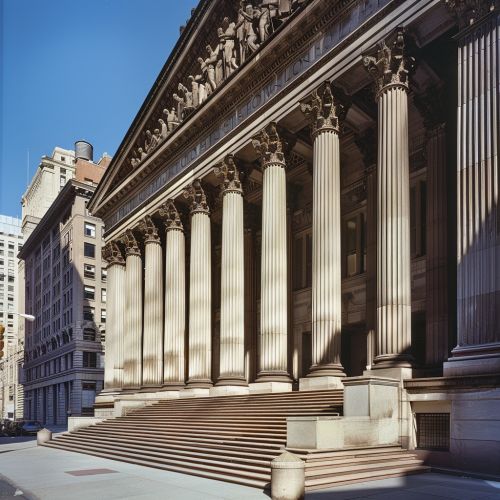United States court of appeals
United States Court of Appeals
The United States Court of Appeals, also known as the federal appellate court, is a critical component of the judicial system in the United States. It serves as the intermediate appellate court, positioned between the district courts and the Supreme Court of the United States. This article explores the structure, function, and significance of the United States Court of Appeals in detail.


Structure and Jurisdiction
The United States Court of Appeals is divided into thirteen circuits, each covering a specific geographical area or subject matter jurisdiction. These circuits include eleven numbered circuits, the District of Columbia Circuit, and the Federal Circuit. Each circuit has its own court of appeals, which hears appeals from the district courts within its jurisdiction, as well as from certain federal administrative agencies and other specialized courts.
- **First Circuit**: Covers Maine, Massachusetts, New Hampshire, Puerto Rico, and Rhode Island.
- **Second Circuit**: Covers Connecticut, New York, and Vermont.
- **Third Circuit**: Covers Delaware, New Jersey, Pennsylvania, and the Virgin Islands.
- **Fourth Circuit**: Covers Maryland, North Carolina, South Carolina, Virginia, and West Virginia.
- **Fifth Circuit**: Covers Louisiana, Mississippi, and Texas.
- **Sixth Circuit**: Covers Kentucky, Michigan, Ohio, and Tennessee.
- **Seventh Circuit**: Covers Illinois, Indiana, and Wisconsin.
- **Eighth Circuit**: Covers Arkansas, Iowa, Minnesota, Missouri, Nebraska, North Dakota, and South Dakota.
- **Ninth Circuit**: Covers Alaska, Arizona, California, Guam, Hawaii, Idaho, Montana, Nevada, Northern Mariana Islands, Oregon, and Washington.
- **Tenth Circuit**: Covers Colorado, Kansas, New Mexico, Oklahoma, Utah, and Wyoming.
- **Eleventh Circuit**: Covers Alabama, Florida, and Georgia.
- **District of Columbia Circuit**: Primarily handles cases involving federal regulations and administrative law.
- **Federal Circuit**: Has nationwide jurisdiction over specific types of cases, including those involving patent law and claims against the federal government.
Each circuit court is composed of a varying number of judges, with the total number determined by Congress. The judges are appointed by the President of the United States and confirmed by the Senate. They serve lifetime appointments, ensuring judicial independence and stability.
Function and Process
The primary function of the United States Court of Appeals is to review decisions made by lower courts and administrative agencies. The appellate process involves several key steps:
1. **Filing an Appeal**: A party dissatisfied with a district court's decision can file a notice of appeal. This initiates the appellate process. 2. **Briefs**: Both parties submit written briefs, presenting their arguments and relevant legal precedents. The appellant's brief outlines the errors allegedly made by the lower court, while the appellee's brief defends the lower court's decision. 3. **Oral Arguments**: In some cases, the court may schedule oral arguments, allowing attorneys from both sides to present their case and answer questions from the judges. 4. **Panel of Judges**: Appeals are typically heard by a panel of three judges. However, in certain cases, an en banc hearing may be granted, where a larger group of judges from the circuit hears the case. 5. **Decision**: After reviewing the briefs and hearing oral arguments, the judges deliberate and issue a written opinion. The opinion may affirm, reverse, or remand the case back to the lower court for further proceedings.
The decisions of the United States Court of Appeals are binding on the district courts within the circuit. However, these decisions can be appealed to the Supreme Court of the United States, which has discretionary jurisdiction over such appeals.
Types of Cases
The United States Court of Appeals handles a wide range of cases, including but not limited to:
- **Civil Cases**: Appeals in civil cases involve disputes between private parties or between private parties and the government. These cases can cover a variety of issues, including contract disputes, tort claims, and civil rights violations.
- **Criminal Cases**: Appeals in criminal cases involve challenges to convictions or sentences imposed by district courts. Defendants may argue that their trial was unfair, that the evidence was insufficient, or that their constitutional rights were violated.
- **Administrative Law**: The court reviews decisions made by federal administrative agencies, such as the Environmental Protection Agency (EPA) or the Securities and Exchange Commission (SEC). These cases often involve complex regulatory issues.
- **Patent Law**: The Federal Circuit has exclusive jurisdiction over appeals in patent cases, making it a specialized court for intellectual property disputes.
- **Immigration Law**: The court reviews decisions made by immigration judges and the Board of Immigration Appeals, often involving deportation orders and asylum claims.
Impact and Significance
The United States Court of Appeals plays a crucial role in shaping federal law and ensuring uniformity in its application. Its decisions set binding precedents within each circuit, influencing the interpretation and enforcement of laws. Additionally, the court serves as a check on the power of the executive and legislative branches, ensuring that their actions comply with the Constitution.
The court's impact extends beyond the immediate parties involved in a case. Its rulings can have far-reaching implications, affecting individuals, businesses, and government agencies across the country. For example, decisions on issues such as civil rights, environmental regulations, and intellectual property can shape public policy and societal norms.
Challenges and Criticisms
Despite its importance, the United States Court of Appeals faces several challenges and criticisms:
- **Caseload**: The court's docket is often congested, leading to delays in the resolution of cases. This can be particularly problematic in time-sensitive matters, such as immigration and criminal appeals.
- **Consistency**: With thirteen circuits, there is a risk of inconsistent rulings on similar legal issues. This can create uncertainty and confusion, particularly for businesses and individuals operating in multiple jurisdictions.
- **Judicial Appointments**: The process of appointing judges can be contentious, with political considerations sometimes overshadowing qualifications and merit. This has led to concerns about the impartiality and independence of the judiciary.
Conclusion
The United States Court of Appeals is a vital institution within the American legal system. It serves as a crucial intermediary between the district courts and the Supreme Court, ensuring that federal laws are interpreted and applied consistently. Despite facing challenges, the court's role in shaping legal precedents and safeguarding constitutional rights remains indispensable.
